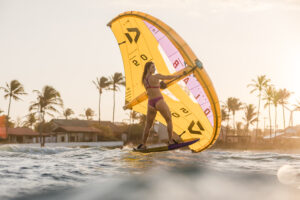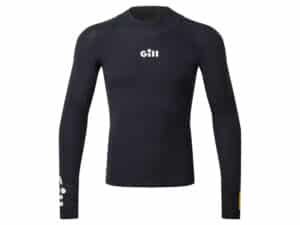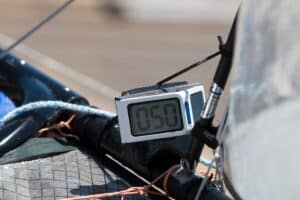Whether your boat’s been confined to the boatyard or if you’re lucky enough to race year round, the biggest speed gain you can make is breakdown prevention through basic maintenance of your hardware and rig. With the new year underway, we checked in with two experts not far from SW’s offices in Rhode Island. Don’t neglect the deck Steve Womsley owns Custom Yacht Outfitters, in Newport, R.I., which among other things, services and installs winch packages and deck gear, and he’s worked on winches on enough boats from megayachts to America’s Cup Class racers to know when a winch is in need of TLC. “First, you need to break down every winch completely and remove all the grease,” he says. “Do one gear spindle and reassemble it greased and oiled, then do your next spindle; that way there’s a lot less confusion about which parts go where on reassembly. If you’re not familiar with the winches, have a drawing on hand. While you’re taking the winch apart look for metal flakes, worn gears, and rounded pawls. If a pawl is rounded, it needs to be replaced. If a gear has a burr, file it off. If there are metal flakes, find out where they’re coming from.” Womsley soaks winch parts in an auto mechanic’s parts cleaner filled with Agitene (a petroleum-based cleaning solution) to remove the grease, but a bucket filled with kerosene or diesel works, too. Once the parts are in the bucket, Womsley suggests using a toothbrush to remove every bit of grease from each part. Once all the parts are clean, use an acid brush-a small, throwaway brush used for applying surface coats-to apply a thin layer of winch grease (available from your winch manufacturer) to all bearing parts except for the pawl and pawl springs, which get a drop of light lubricant. “I put a thin layer of grease on all the parts, being very careful not to overdo it, because that causes friction and build-up,” says Womsley. “For boats that race frequently and are looking for higher performance, I thin out the winch grease with a little bit of 3-in-1 oil or something slightly heavier like Lewmar’s racing oil.” As far as deck gear is concerned, Womsley says that every turning block and rope clutch should be regularly flushed with freshwater under pressure. “Don’t pull them apart unless there’s a known issue,” he adds. “They’re built to last a long time with freshwater flushing, so make it a routine after every time you go sailing.” To tell whether a traveler, spinnaker track car, or jib car is in good shape, move them back and forth on their respective tracks. If the roll isn’t smooth, flattened ball bearings are usually the cause. “The spinnaker pole and main traveler car’s bearings will usually wear out first,” says Womsley. “If you need to replace the ball bearings, Irecommend using a ball-bearing loader [available from the manufacturer].” www.customyachtoutfitters.com Survey the rig Dave Bieling is a Newport-based professional rigger and sailor who has spent as much time up rigs as many of us have spent on deck. He knows what keeps a rig up and what brings a rig down. He advises us to start with a look at the shrouds. “If you’ve left the rig in the boat for the season, check for any bleeding rust or broken strands on wire rigging,” says Bieling “If you see any problems, bring in a professional rigger to check it out.” For climbing the rig, Bieling uses a bosun’s chair because, he says, it’s more comfortable than a bowman’s harness, allowing him to stay aloft longer. “It also has pockets so you can carry a bunch of stuff,” he says, “because you might be doing more than one job.” Bieling attaches his chair to the halyard with a carabiner through the rope eye that the halyard shackle is on, and uses the shackle as a safety. “First stop is the spreader ends, where I make sure they’re secure and wrapped well [with Teflon tape] or padding so the tips won’t damage the sails,” says Bieling. “Next, go all the way to the top of the rig to check the sheaves. Make sure they’re rotating freely and that the sheave surfaces are in good shape. If there’s a rough area, put a file to it and round it off. If the anodizing on the sheave is compromised, the sheave will need to be replaced the next time the rig is out of the boat. “Because any trip you can make aloft at your leisure is better than a trip ofnecessity, inspect everything. Check that the wind instruments are waterproofed, and that their contacts are clean. Check that all cotter pins are properly bent and that the ends are covered with silicone or tape so they won’t tear sails and running rigging.” Bieling also suggests using McLube in both the headsail and mainsail luff tracks. “I go up the rig and start at the top with the lube and the supplied straw,” says Bieling. “I get lowered down the headstay slowly, spraying first one groove and then the other.” davebieling@yahoo.com









